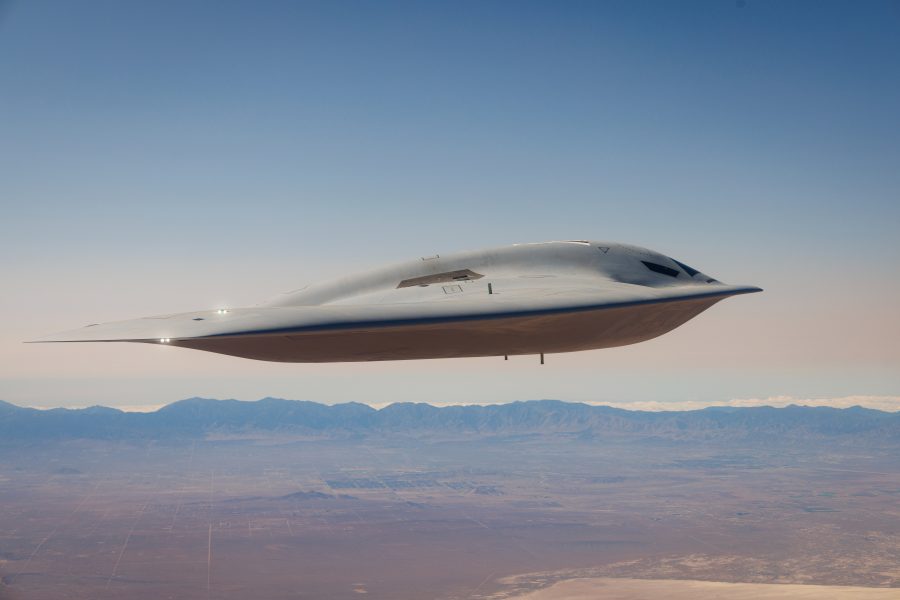Audio of this article is brought to you by the Air & Space Forces Association, honoring and supporting our Airmen, Guardians, and their families. Find out more at afa.org
The Air Force released half a dozen new photos of the second B-21 bomber to fly Sept. 12, giving observers and aviation enthusiasts another glimpse of the secretive and hotly anticipated Raider.
The photos, showing the new tail taking off from Palmdale, Calif., and landing at Edwards Air Force Base, Calif., are relatively low-resolution but show off the aircraft’s distinctive delta shape, unusual cockpit windows, tall, triangular doors on its upper surface—one on either side—which open to provide more air to the engines during ground operations, takeoff, and landing, and and some of its control surfaces.
One of the images even shows the second B-21 tail taxiing while what appears to be the first tail is partially visible in a hangar.
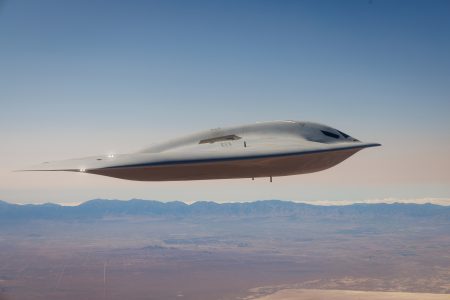
A second B-21 Raider, the nation’s sixth-generation stealth bomber, joins flight testing at Edwards Air Force Base, Calif., Sept. 11, 2025. The program is a cornerstone of the Department of the Air Force’s nuclear modernization strategy, designed to deliver both conventional and nuclear payloads. (Courtesy photo)
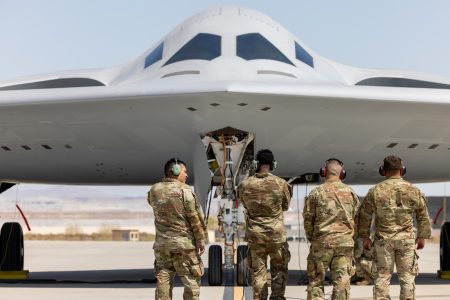
U.S. Air Force Airmen with the 912th Aircraft Maintenance Squadron prepare to recover the second B-21 Raider to arrive for test and evaluation at Edwards AFB, Calif., Sept. 11, 2025. The arrival of a second test aircraft provides maintainers valuable hands-on experience with tools, data and processes that will support future operational squadrons. (U.S Air Force photo by Kyle Brasier)
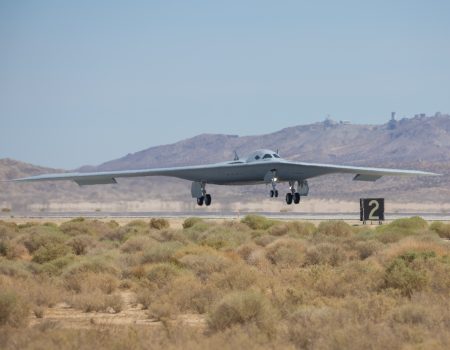
A B-21 Raider test aircraft lands at Edwards Air Force Base, Calif., during ongoing developmental flight testing, Sept. 11, 2025. The B-21 will be the backbone of the bomber fleet; it will incrementally replace the B-1 Lancer and B-2 Spirit bombers. (U.S Air Force photo by Todd Schannuth)
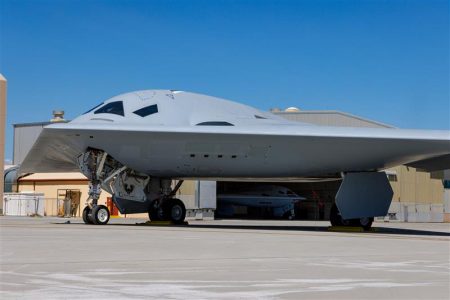
A second B-21 Raider, the world’s sixth-generation stealth bomber, test aircraft arrives at Edwards Air Force Base, Calif., Sept. 11, 2025. The addition of the second test aircraft expands mission systems and weapons integration testing, advancing the program toward operational readiness. (Courtesy photo)

A second B-21 Raider, the nation’s sixth-generation stealth bomber, joins flight testing at Edwards Air Force Base, Calif., Sept. 11. The program is a cornerstone of the Department of the Air Force’s nuclear modernization strategy, designed to deliver both conventional and nuclear payloads. (Courtesy photo)
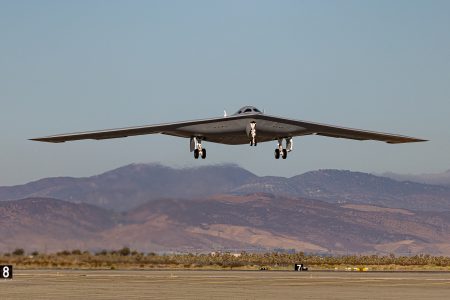
A second B-21 Raider test aircraft takes off, Sept. 11, from Palmdale, Calif., to join the Air Force’s flight test campaign at Edwards Air Force Base, Calif. The addition of the second test aircraft expands mission systems and weapons integration testing, advancing the program toward operational readiness. (Courtesy photo)
Of note, the images also show this B-21 relatively unadorned.
The first aircraft sported extra test equipment on its first flight, with a probe coming out the front and trailing a lengthy cable from the upper surface of the tail. It also featured the emblems of Air Force Materiel Command, Global Strike Command, and the 412th Test Wing behind the cockpit windows, and its tail number and nickname—“Cerebrus”—on the front landing gear door.
In contrast, the second B-21 appeared to have none of those things.
The absence of the testing equipment may mean this will be the radar cross section test aircraft, used to test the B-21’s stealth. It could also mean it is more operationally configured.
One image does appear to show an emblem painted on the inside of the front landing gear door—a Spartan-style helmet with wings.
The Air Force has revealed little about the B-21’s characteristics and capabilities but claims it is the world’s first sixth-generation aircraft.
Photos released by the service or snapped by aviation spotters offer small details on the aircraft, including tidbits on its estimated size, number of weapons bays, control surfaces, exhausts, and more.
Audio of this article is brought to you by the Air & Space Forces Association, honoring and supporting our Airmen, Guardians, and their families. Find out more at afa.org
